|
Water levels along the Bourne Eau
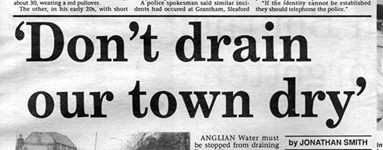
The Lincolnshire Free Press,
Tuesday 14th January 1992
Both the Bourne Eau in South Street
and St Peter's Pool dry up completely during prolonged dry spells and the
continued extraction of water from underground sources around Bourne has
always been blamed as a major factor by our local councillors and the townspeople.
One of the worst examples occurred in January 1992 when the situation
brought a dramatic condemnation from Bourne Town Council which issued an
appeal to the water authority to "stop draining the town dry".
Councillor Peter Garner told the Lincolnshire Free Press (Tuesday
14th January 1992): "We have got to start fighting for our environment.
The town council has got to lead the way and even take legal advice over
whether Anglian Water can take our water for commercial gain. They are
sucking Bourne dry. Water is basic to this town and without the Eau and
the Wellhead, the settlement of Bourne would not exist. The fact that we
have a drought does not mean that we should lose our amenities. Anglian
Water should not be pumping so near the town centre and the Wellhead. If
the water table beneath Bourne continues to fall, trees in the town will
die and in the long run there could be a risk of subsidence."
Other councillors were equally incensed. The mayor, Councillor Ray Cliffe,
told the newspaper: "The heritage of Bourne has been taken away and we want
it back", while Councillor John Kirkman said that he found the situation
"most upsetting" and had been told by the NRA that remedial work was being
investigated but the solution was a matter of money. "This is totally
unacceptable", he said. "A scheme has been produced to replace water in
the River Slea at Sleaford and I can see no reason why a similar scheme
should not be produced for the Bourne Eau."
The complaints were accepted by the NRA whose environmental manager, Bill
Forbes, said: "I know there has been disquiet about the lack of flow in
the Bourne Eau but this is due to a combination of abstraction and the
worst drought this century." But he added that the river was not on the
list of those which would have their flow supplemented.
The National Rivers Authority which existed between 1989 and 1996 issued
licences for the abstraction of water but this is now the responsibility
of the Environment Agency of England and Wales. But the current situation
affecting St Peter's Pool and the Bourne Eau is similar to that of twenty
years ago and has again brought protests from townspeople who are blaming
the drought conditions of last summer coupled with the continued
extraction of water to supply a wider catchment area.
But Anglian Water, which is directly responsible for our water supplies,
insists that it is not to blame. A spokesman told The Local
newspaper (2nd September 2011) that they did pump water from aquifers
below the town, including the Bourne Eau, but added: "The drying up of the
pool is not related to our water abstraction. Instead, it is likely to be
a natural phenomenon. Groundwater levels will typically be low at this
time and will be lower this year due to the cold, dry winter and
exceptionally dry spring. The water we borrow from the environment comes
from a mixture of rivers and boreholes. In Bourne, the groundwater from
our boreholes is taken out of naturally occurring underground stores some
40 metres beneath the surface. We continually monitor all our water
sources to ensure they are used in a sustainable way."
This all sounds very plausible but Bourne has been a water bonanza from
the earliest times. In 1894, for instance, one borehole alone was sunk to
a record depth of 134 feet to supply five million gallons of water a day which
was then piped over a distance of ten miles to supply the Spalding area.
By 1969, there were 130 boreholes at various points around the town which
shows how this valuable natural resource has been exploited and although
most of these have now been sealed, all remaining sources are
administered by Anglian Water.
The current situation in Bourne is similar to that in many other parts of
England and was recently highlighted by The Sunday Times which
stated quite categorically that our rivers are being diminished as utility
companies drain billions of gallons from vulnerable waterways to service a
soaring demand (18th September 2011). This wholesale extraction of water
has caused many to shrink and stagnate, putting wildlife at risk, killing
fish and reducing some tributaries to puddles.
Authorities such as Anglian Water pay for licences at each of the
sites where they drain from a river or aquifer and all claim that they are
operating at below agreed levels although the terms of many of these
permits were set decades ago and are currently being reviewed in an
attempt to address the worst cases of over-abstraction.
Environmentalists are therefore calling for the licences of the worst
offenders to be revoked. Other measures such as reducing consumption by
the compulsory installation of water meters in all households and the
repair of leaking pipes may help but the building of new reservoirs
appears to be the answer. In the meantime, there can be no doubt that
water usage during dry spells causes problems because supplies are not
being replenished from natural sources and if it were not being extracted
from our aquifers and waterways at such an alarming rate, then it is quite
obvious that St Peter's Pool and the Bourne Eau would be in a much
healthier condition than they are today.
|
PHOTO ALBUM |
|
Water levels along the Bourne Eau in South
Street dropped dramatically during the winter of 1991-92, exposing
the bottom covered rubbish and turning the picturesque waterway
into an eyesore. Members of the town council were so angry that
they challenged Anglian Water over its continued extraction from
underground sources claiming that it was "draining the town dry".
There have been many similar occurrences since, particularly
during the winter of 2011-12 when St Peter's Pool dried up
completely yet the water authority has continued to deny
responsibility. |
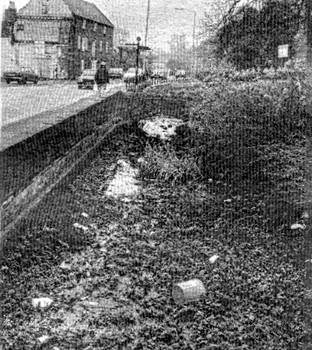 |
|
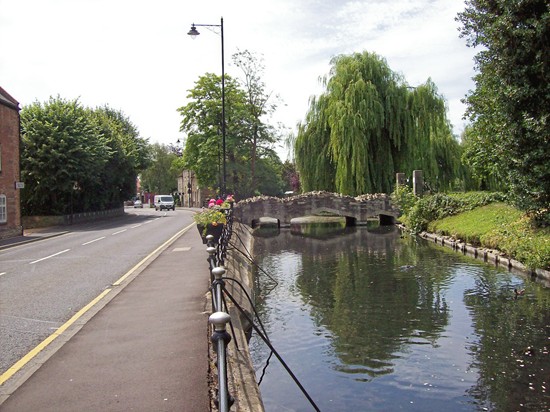 |
|
In the autumn of 2011, the Bourne Eau along
South Street dried up, a regular occurrence during summers with
very low rainfall although continued extraction by Anglian Water
is seen by many as a major contributory cause. |
|
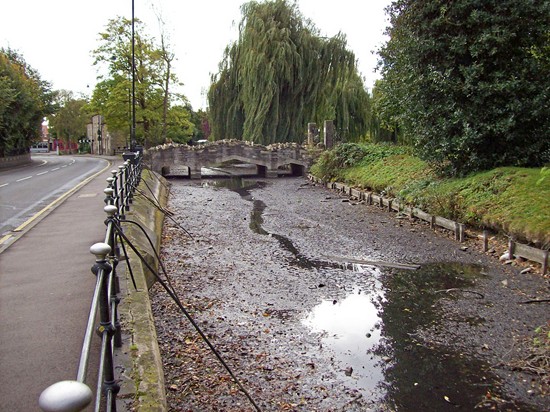 |
|
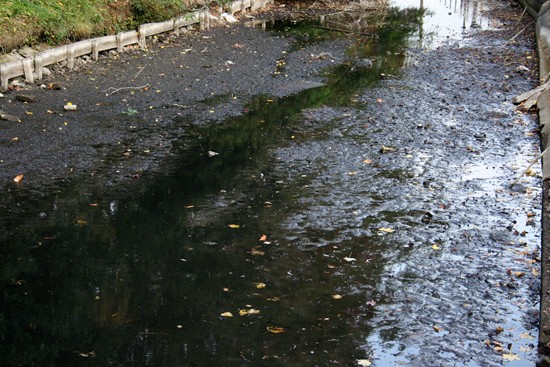 |
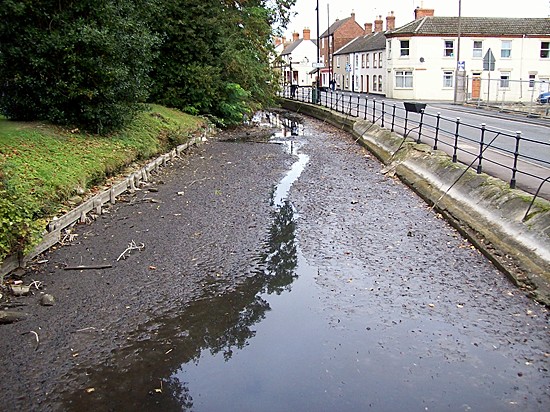 |
|
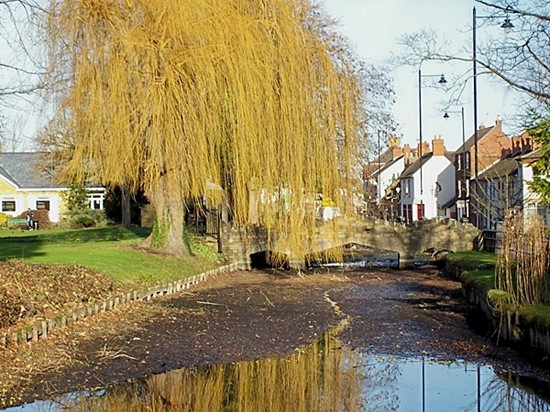 |
|
 |
REVISED JANUARY 2012
Return to The
Bourne Eau

Go to:
Main Index Villages
Index
|






